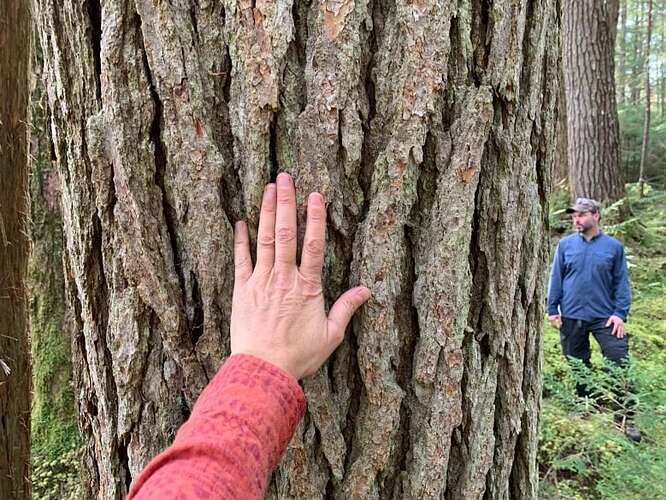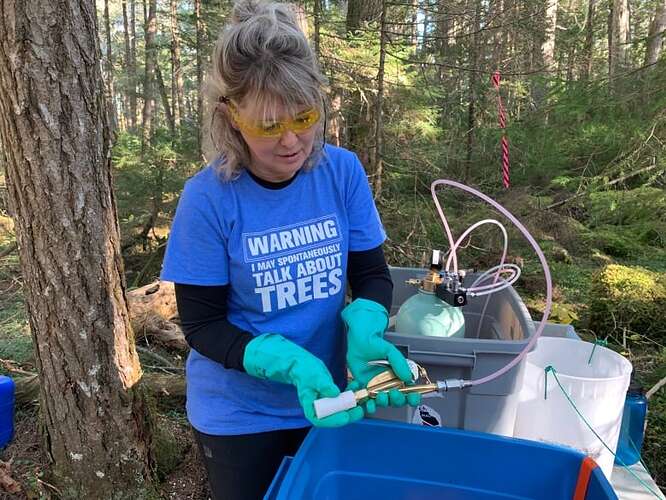CBC News
Efforts to protect centuries-old eastern hemlock trees from an invasive insect are expanding in Nova Scotia after a volunteer group found success in the Tobeatic Wilderness Area.
Last fall, a group of volunteers started inoculating trees on the central island of Sporting Lake with insecticide, to protect them from an infestation of hemlock woolly adelgids.
The adelgid has been wreaking havoc on hemlocks in eastern North America — including Nova Scotia — for years.
The tiny bugs are native to the Pacific Northwest and Japan. They kill hemlock trees by attaching themselves to the base of needles and feeding on sugars, starving the tree of nutrients. While feeding, they produce a substance that looks like wool on the underside of the needles.
Matt Miller, a forester who volunteered with the group last fall, said about 2,160 trees on the island were inoculated to prevent an infestation.
“We treated darn near every hemlock tree on the island that we could find,” said Miller, who is now the general manager of the Medway Community Forest Co-operative.
Now, a year later, Miller said the group is seeing results.
“Looking at the branches and seeing dead hemlock woolly adelgid — that means that the chemicals have been uptaken by the tree and they’re providing the protection against the aphid,” he told CBC Radio’s Information Morning Nova Scotia on Friday.
Since their success in the Tobeatic Wilderness Area, Miller said the provincial and federal governments have provided some funding to expand treatments to trees at Pollards Falls in Queens County and Four Mile Stillwater in Annapolis County.
He said the group is also holding an information session about the hemlock woolly adelgid, how it can be recognized on trees and how trees can be treated with the insecticide.
“The intention is, over the longer term starting in 2023, we’d really like to amp up the Hemlock Heroes program and really capitalize on the energy that folks have and lead a community-based stewardship project to help conserve our hemlocks,” he said.
Miller acknowledged that some people may be hesitant to use pesticide, but he said it’s doing important work to save the trees.
“I understand that folks may hear the word pesticide and have that sort of guttural reaction that comes along with that sometimes. And I think there’s also a guttural reaction that you’re going to feel when you see your first [instance] of declining and dead hemlock, which we’re starting to see quite a bit here in southwest Nova Scotia,” he said.
He added that the pesticide is only a temporary solution before introducing a “biological control program.”
That means introducing a new species of insect from Western Canada — that already coexists with hemlock trees — that will eat the woolly adelgid.
He said scientists in the United States are already using this method, and two species of beetles are being looked at in the case of Nova Scotia.
“It takes time to build up those populations … and so that’s really why we’re having to implement this program as a short-term solution to buy ourselves time to bring in those predator pests and provide that longer-term solution.”
Miller said he’s optimistic about the future of hemlock trees in Nova Scotia.
“I think we’ve really tapped into something here with Sporting Lake and we really saw the proof of concept that it can work and [I’m] really excited to bring the fight to [hemlock woolly adelgid] in 2023.”


